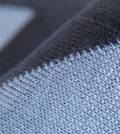
It takes a pound of chemicals to grow five pounds of cotton, the fiber most commonly used for T-shirts; cotton fields account for more than one-tenth of all pesticide use worldwide. Global cultivation of more than 37 billion pounds of cotton a year depletes soil and contaminates water and air. Organic cotton has several advantages over commercially produced cotton. Because organic cotton is grown with no chemicals or pesticides, it will not induce allergic reactions that commercial cotton might.
Cotton is typically used in clothing and bedding and the by-products and toxins in commercially grown cotton can cause skin irritation such as redness, rashes and itching. Of paramount importance is the fact that cotton is commonly used in children’s and baby clothing and an allergic reaction may not be the suspected culprit. There is no irradiation or genetic engineering involved in the production of organic cotton. As the insects that invade cotton become immune to the chemicals involved in production, new chemicals are used on an ongoing basis. Each t-shirt made with commercial cotton uses a quarter of a pound of chemical pesticides and fertilizers. These chemicals run off and contaminate ground water, plant and animal life found in streams and rivers and drinking water.
BAMBOO
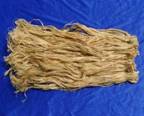 Continental bamboo jersey is combined with 30% organic cotton to give stability, beautiful softness and perfect printability. Naturally sustainable bamboo is rapidly emerging into the fashion world. Fabric woven from bamboo yarn is light, almost translucent, and softer than cotton. It has a natural quality that feels like silk, but has the advantage of being machine-washable. This natural fibre is hypoallergenic, absorbent, and fast drying. It is naturally anti-bacterial and will not hold odour. Like other natural fibres, it allows the body to breathe as the fabric absorbs the perspiration away from the body.
Continental bamboo jersey is combined with 30% organic cotton to give stability, beautiful softness and perfect printability. Naturally sustainable bamboo is rapidly emerging into the fashion world. Fabric woven from bamboo yarn is light, almost translucent, and softer than cotton. It has a natural quality that feels like silk, but has the advantage of being machine-washable. This natural fibre is hypoallergenic, absorbent, and fast drying. It is naturally anti-bacterial and will not hold odour. Like other natural fibres, it allows the body to breathe as the fabric absorbs the perspiration away from the body.
It also is the most sustainable of the natural fibres. It is fast-growing - the type of bamboo used for making fabric, commonly known as Moso, can reach a mature height of 75 feet in just 45 to 60 days. Because of its natural antibacterial properties, it needs no pesticides. This fabric is cooling in summer, warm in winter and environmentally friendly all year round. It can be harvested and harvested and it will grow again and again. When your bamboo garment finishes its useful life it will easily return to the earth as it is 100% biodegradable. The bamboo tees come in white, black and leaf green and are 70% bamboo fibre mix/ 30% cotton.
RECYCLED BOTTLE FIBRE
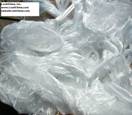 Plastic is one of the most problematic wastes to deal with as it is non-biodegradable. Most plastic waste ends up in landfills but as we start to run out of space, the terrible alternative of burning waste into the atmosphere is a daily reality not often brought to light. The release of toxic chemicals into the air during combustion of waste is associated with a range of human health problems including cancer, reproductive problems and learning disabilities. Our amazing high-tech t-shirts are made from a 50% recycled plastic bottle fibre and 50% cotton mix.
Plastic is one of the most problematic wastes to deal with as it is non-biodegradable. Most plastic waste ends up in landfills but as we start to run out of space, the terrible alternative of burning waste into the atmosphere is a daily reality not often brought to light. The release of toxic chemicals into the air during combustion of waste is associated with a range of human health problems including cancer, reproductive problems and learning disabilities. Our amazing high-tech t-shirts are made from a 50% recycled plastic bottle fibre and 50% cotton mix.
This more ecologically-correct product uses technology (which incidentally is developed in what we are used to derogatively
call the 'third world') to transform PET, a difficult plastic material (think of all soda pop, water bottles, detergents etc.) which can take up to four centuries to decompose in nature, into a wearable fabric. The plastics are collected, separated by colour, washed, ground, granulated and made into fibres to produce thread for making up the fabric. The tee does not need any special care and is long-lasting. It feels just like an ordinary cotton tee to the touch and breathes well on the body.
HEMP FIBRE
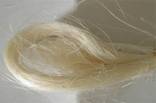 Hemp is nature’s longest fibre, which means longer garment life as opposed to other plants’ shorter fibres.Hemp is naturally resistant to mould and UV light. Hemp is stronger when wet and reveals a new surface with every wash becoming each time softer. Given reasonable care it will last a lifetime. Hemp cloth is extremely hard-wearing and outwears cotton and other natural fibres.In contrast to cotton, hemp uses virtually no pesticides because it is unpalatable to insects and needs no herbicides because it grows too quickly for any weed to compete. The more environmentally-friendly hemp crop produces a staggering 250% more fibre than cotton.
Hemp is nature’s longest fibre, which means longer garment life as opposed to other plants’ shorter fibres.Hemp is naturally resistant to mould and UV light. Hemp is stronger when wet and reveals a new surface with every wash becoming each time softer. Given reasonable care it will last a lifetime. Hemp cloth is extremely hard-wearing and outwears cotton and other natural fibres.In contrast to cotton, hemp uses virtually no pesticides because it is unpalatable to insects and needs no herbicides because it grows too quickly for any weed to compete. The more environmentally-friendly hemp crop produces a staggering 250% more fibre than cotton.
Not only does it produce a superior quality long-lasting fibre with far less damage to the environment, but it also provides a wide range of other products useful to man. The tees made from hemp fibres come in a range of colours - mustard, sky, army, mango, rust, navy, black, heather grey, and white. Hemp fibers can be spun and woven in a fine, crisp, linen-like fabric and used for apparel, home furnishings, and carpeting. Hemp has antimildew and antimicrobial properties, making it a good solution for shower curtains, rain apparel, and floor coverings.
SOYBEAN FIBRE
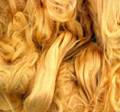 Soy in clothing isn't exactly new. Motor magnate Henry Ford first talked of it in the 1940s and was photographed wearing the first known soy suit and tie. Soy fibres largely disappeared though, until recent developments by China's Beijing Huakangtianyuan High-Tech Co brought soy back to the fashion plate. Now, soybean protein fibre is being touted as a 'vegetable cashmere' - a new eco-friendly luxury textile offering many of the properties today's consumers demand.
Soy in clothing isn't exactly new. Motor magnate Henry Ford first talked of it in the 1940s and was photographed wearing the first known soy suit and tie. Soy fibres largely disappeared though, until recent developments by China's Beijing Huakangtianyuan High-Tech Co brought soy back to the fashion plate. Now, soybean protein fibre is being touted as a 'vegetable cashmere' - a new eco-friendly luxury textile offering many of the properties today's consumers demand.
Those in the know rave about soy's incredibly soft-to-the-hand feel, second-skin comfort, luster, loft and drape, combined with wash ability, durability, and good wear. As the fibre is so young, everyone is still exploring its technical properties and benefits - including claims that soy's natural amino acids have a positive health effect on the wearer's. There are other eco-fibres used in addition to hemp and bamboo such as seaweed, soy, flax (linen) and even recycled plastics used in textiles. While it is impossible to predict where future market trends will travel, as the world becomes more environmentally conscious, eco-fibres will likely continue to grow in popularity.
ORGANIC WOOL
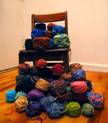 Sheep, alpaca, and llamas provide us with wool, a miraculous fiber. Wool’s most remarkable quality is its ability to maintain comfortable body temperature, no matter what the season. Wool produces warmth in winter without overheating, and actually keeps you cooler on summer nights because of its natural moisture-wicking properties. Another reason to choose wool is because it is hypoallergenic and resistant to bacteria, mold, and mildew, which trigger allergic reactions in some people. Wool is also a natural flame retardant.
Sheep, alpaca, and llamas provide us with wool, a miraculous fiber. Wool’s most remarkable quality is its ability to maintain comfortable body temperature, no matter what the season. Wool produces warmth in winter without overheating, and actually keeps you cooler on summer nights because of its natural moisture-wicking properties. Another reason to choose wool is because it is hypoallergenic and resistant to bacteria, mold, and mildew, which trigger allergic reactions in some people. Wool is also a natural flame retardant.
SILK
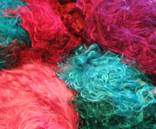 Silk is a fiber with an impressive 3,000-year history. There is nothing like silk for warmth and breath ability. Spun soft and lofty, silk is as insulating as the finest down. Silk is a natural protein fibre that is obtained from the cocoon of the silkworm larva. The shinning appearance for which it is prized comes from the fibre’s triangular prism-like structure, which allows silk cloth to refract incoming light at different angles. Silk is delicate as well as very durable and, more importantly, extremely long lasting. Legend has it that silk was discovered around 2640 B.C.
Silk is a fiber with an impressive 3,000-year history. There is nothing like silk for warmth and breath ability. Spun soft and lofty, silk is as insulating as the finest down. Silk is a natural protein fibre that is obtained from the cocoon of the silkworm larva. The shinning appearance for which it is prized comes from the fibre’s triangular prism-like structure, which allows silk cloth to refract incoming light at different angles. Silk is delicate as well as very durable and, more importantly, extremely long lasting. Legend has it that silk was discovered around 2640 B.C.
when a Chinese Empress, Hsi Ling Shi, became intrigued by silkworms and started unwinding the threads on the cocoons. China still holds the monopoly on the industry today with 54% of the world's silk production. Cultivated silk is a beautiful fiber with a smooth luxurious hand and a natural sheen. Wild silks are duller and have a more coarse hand and texture. Silk’s abrasion resistance is moderate but it is ranked high in strength due to its long strands. It accepts color exceptionally well and it is dyed in vibrant shades. It can be mixed with other stronger fibers to maximize its durability.
POLYESTER AND NYLON FIBRES
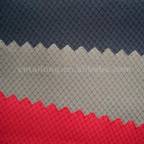 The generic polyester and nylon fibers used in some T-shirts don't just contribute to the burning of fossil fuels, they’re actually made from them; every polyester fiber is spun solidified petroleum. Synthetic-fiber manufacture involves the production and processing of oil, gas, and chemicals, all of which use water and energy and pollute the air. It also dumps solvents, mineral oils, spent acids, and caustics into our water.
The generic polyester and nylon fibers used in some T-shirts don't just contribute to the burning of fossil fuels, they’re actually made from them; every polyester fiber is spun solidified petroleum. Synthetic-fiber manufacture involves the production and processing of oil, gas, and chemicals, all of which use water and energy and pollute the air. It also dumps solvents, mineral oils, spent acids, and caustics into our water.
LINEN
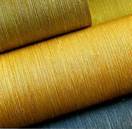 Linen is one of the strongest of the vegetable fibers and has 2 to 3 times the strength of cotton. Not only is the linen fiber strong, it is smooth, making the finished fabric lint free. It grows softer over time and becomes finer the more it is washed. Linen is from the flax plant and is a bast fiber taken from the stalk. The luster is from its natural wax content. This fiber can be easily dyed and the color does not fade when washed. Linen does wrinkle easily but also presses easily. Highly absorbent and a good conductor of heat, this fabric is cool in garments. However, constant creasing in the same place in sharp folds will tend to break the linen threads. Linen has poor elasticity and does not spring back readily.
Linen is one of the strongest of the vegetable fibers and has 2 to 3 times the strength of cotton. Not only is the linen fiber strong, it is smooth, making the finished fabric lint free. It grows softer over time and becomes finer the more it is washed. Linen is from the flax plant and is a bast fiber taken from the stalk. The luster is from its natural wax content. This fiber can be easily dyed and the color does not fade when washed. Linen does wrinkle easily but also presses easily. Highly absorbent and a good conductor of heat, this fabric is cool in garments. However, constant creasing in the same place in sharp folds will tend to break the linen threads. Linen has poor elasticity and does not spring back readily.
ECOFIBRES
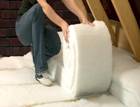 There are other eco-fibres used in addition to hemp and bamboo such as seaweed, soy, flax (linen) and even recycled plastics used in textiles. While it is impossible to predict where future market trends will travel, as the world becomes more environmentally conscious, eco-fibres will likely continue to grow in popularity.
There are other eco-fibres used in addition to hemp and bamboo such as seaweed, soy, flax (linen) and even recycled plastics used in textiles. While it is impossible to predict where future market trends will travel, as the world becomes more environmentally conscious, eco-fibres will likely continue to grow in popularity.
